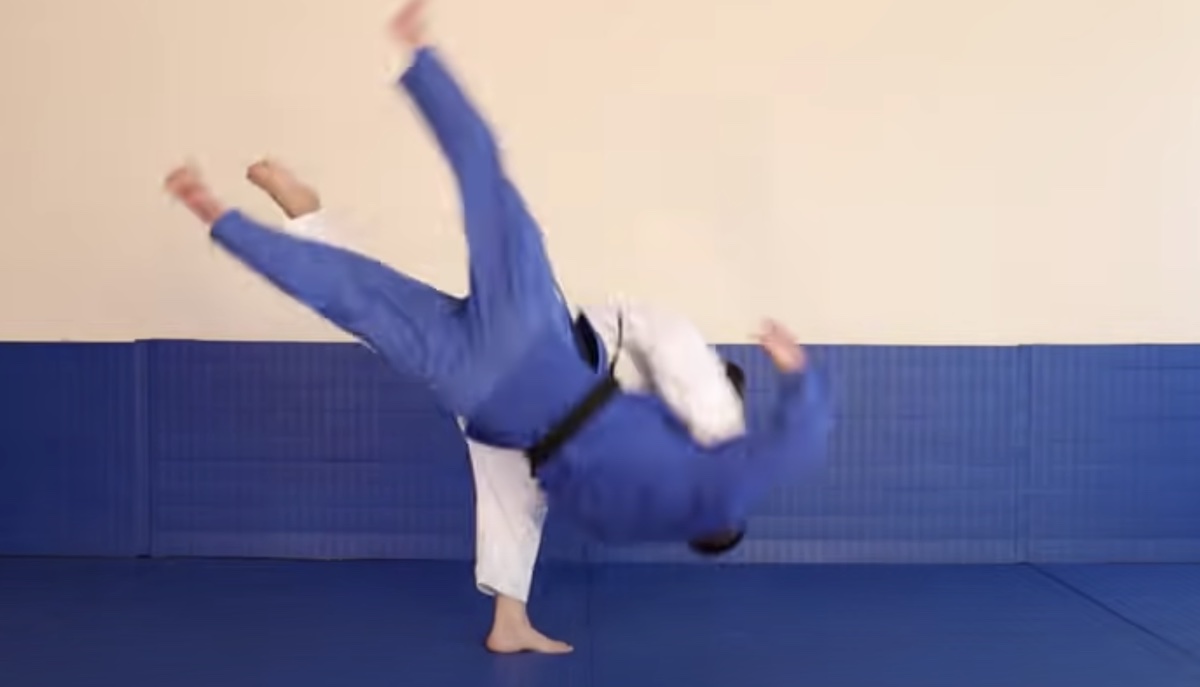Uchi Mata: Judo Throw

Knowing Judo techniques is a must if you wish to improve your grappling game. One of the core techniques that you should know how to execute is uchi mata.
Here is everything that you need to know about the uchi mata throw. Going over various setups for the throw and list important tips to remember for executing this technique.
What is an Uchi Mata
Uchi mata is one of the core Judo techniques developed by Jigoro Kano. In English, the uchi mata throw translates to “inner thigh throw.
It is one of the most effective and popular throws within the grappling art of Judo.
To execute uchi mata, you step forward with one leg, while the other leg is placed between your opponent’s legs. As your opponent comes forward, you load them and kick between their legs to kick them over
What makes uchi mata so effective is that it can be set up in numerous ways. As either an offensive attack or a defensive counter.
It can be a direct attack, set up off a fake, or to counter an attacking a pressing opponent.
In MMA, the throw has been proven very effective in grappling situations with striking involved. One of the best at this throw was MMA vet and Judo ace Karo Parisyan.
Today, uchi mata is a must know throw, whether you compete in grappling or MMA.
Uchi Mata vs. Harai Goshi
Another throw that beginners often confuse with uchis mata is harai goshi. They do look similar and have the same steps, but they have one distinct difference.
In the uchi mata throw, you target the opponent’s inner leg. Harai goshi targets the opponent’s far leg.
The great thing about these two throws is that their mechanics are nearly the same. You could fake one of the throws to set up the other to keep your opponent off balance.
The Basic Uchi Mata
The basic uchi mata like most all pulling throws in Judo starts with a lapel and arm grip. Aim to grab a good amount of fabric right above your opponent’s elbow.
You’re going to use these grips to pull your opponent towards you in a slightly upward direction. With your arm grip, rotate your elbow upward as you pull your opponent toward you. Doing this also helps you in guiding the direction of your throw.
Next is the footwork for the throw. You’re going to do a complete 180 and face the same way as your opponent.
Your support foot needs to land right between the feet of your opponent. The sweeping leg needs to swing right between your opponent’s legs. Make sure that the toes of your sweeping leg are pointed down.
As you pull your opponent forward into the throw, you need to create hip on hip contact with them. When you achieve this and correctly do the footwork, your opponent should go up with ease.
No-Gi Uchi Mata
Let’s switch it up and detail the No-Gi version of uchi mata. Of course, there’s going to be an alteration in the grips since you don’t wear a Gi in No-Gi Jiu Jitsu.
Like in the Gi, there’s numerous different setups, but we’ll detail the throw from an underhook. To get the underhook, you first have to set it up with a collar tie.
Grab a collar tie to break your opponent’s posture. In the moment, they go to recover, grab your underhook on the opposite side. Your other hand will be holding wrist control on your opponent’s other arm.
From here, you can do various setups to go into uchi mata, but we’ll just go over the throw itself. Hook the inner thigh of your opponent, step in, connect your hips together, and take them up for the throw.
Easy Uchi Mata Entry
This technique for the throw is great for beginners just learning the throw. It starts the same as the other techniques previously explained with inside control.
What you’re going to do first is take your sweep leg and attach it to your opponent’s inside leg. Doing this allows you to do a cheat step and jump into the throw.
Just pull yourself into your partner as you pull them up and go right into the throw.
Belt Grip Uchi Mata
This set up with a belt grip can be done with just three steps and ends in a forward roll. Grab your opponent’s lapel down to break their posture and step in to grab their belt.
From there, you’re going to go into a rolling variation of the uchi. When you step in and turn, look to the floors, base your hand on the mat, and roll your opponent over.
Overhook Uchi Mata
An uchi off an overhook control is a great option to set up this throw. It’s great in both Gi and No-Gi, but we’ll detail the Gi version from this section.
When you’re hand-fghting, grab a deep underhook on your opponent and cross grab their far lapel. Use this grip to compromise your opponent’s posture. You can either finish the throw with a traditional uchi or do a rolling variation.
Cross Grip Uchi Mata
For this variation, you’re going to take a cross grip on your opponent’s lapel and a sleeve grip. You’re going to do the same footwork as the traditional throw, but with a slight twist.
When you step in, lift your elbow on your lapel grip arm. This breaks your opponent’s posture and helps you in getting them up for the throw.
This video details the last four variations of the throw.
Uchi Mata For BJJ
The last variation of this throw that we’ll detail was created specifically for BJJ. In Judo, the traditional setup doesn’t account for possible single or double leg attempts by your opponent.
For this setup, you’re going to take a standard lapel grip and sleeve grip. This type of sleeve grip is illegal in Judo, but perfectly fine for BJJ.
It also helps block your opponent if they attempt a takedown since you’re controlling their arm. Your entry with your lead foot is also going to be a bit different.
Step your lead foot in right next to your opponent’s lead foot and turn it inward. From there, just step your base foot behind your lead foot and go right into the throw.
Importing Tips You Need to Remember For Executing Uchi Mata
Uchi mata is a great throw, but you cannot forget a single detail when executing this technique. Here are important tips you need to remember for executing uchi mata.
- Lifting Opponent’s Arm: On the pull, you need to remember the proper direction that you’re pulling your opponent. You need to pull them at an upward angle forward.
- Turning Elbow: Another detail that you need to remember on the throw is the turn of your elbow. Turn the elbow of your arm grip upward and in like you’re checking the time on your watch.
- Support Foot Placement: Your support foot needs to be placed right between your opponent’s feet. Anywhere else and the throw will not work.
- Sweep Foot Placement: Your sweep foot needs to kick right between your opponent’s legs.
- Toes Down: Make sure that the toes of your sweep foot are facing down when you sweep your foot into position.
- Hip Contact: Remember that you need to have hip on hip contact to successfully execute uchi mata.






